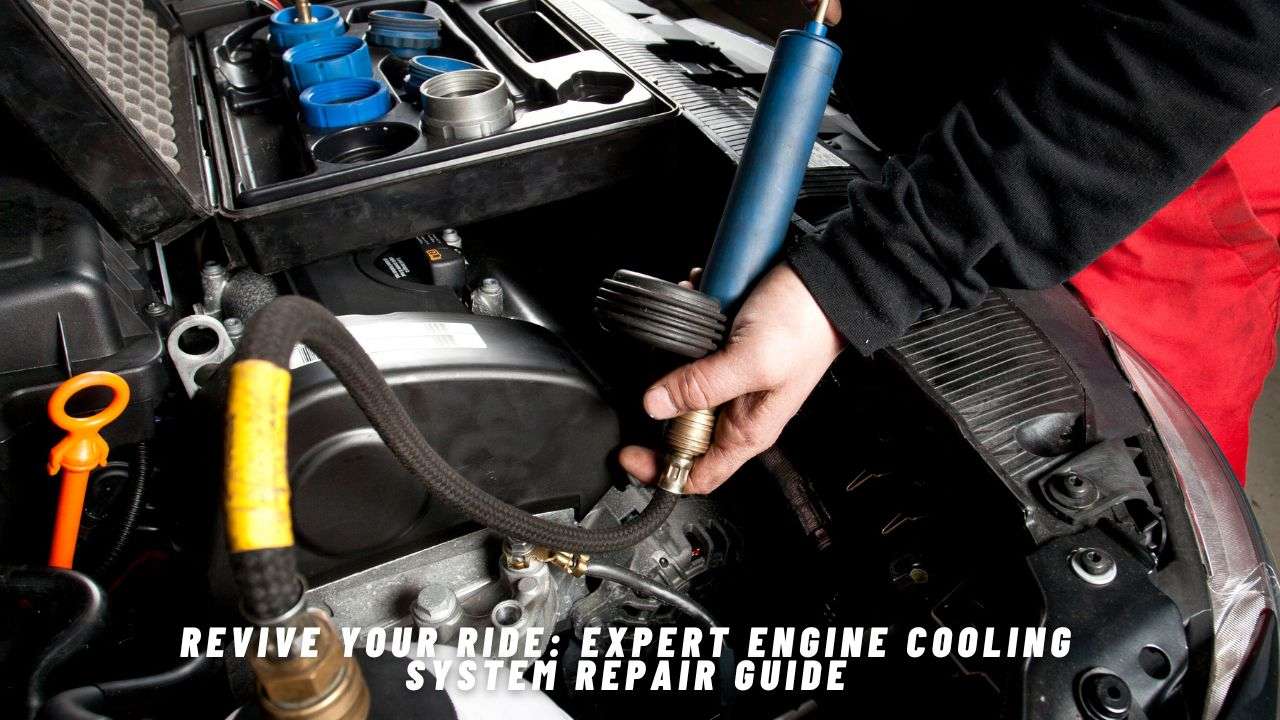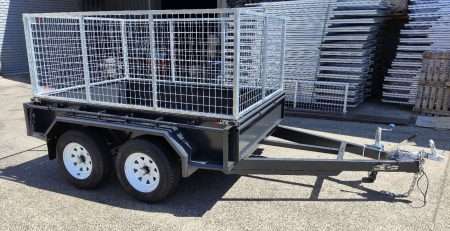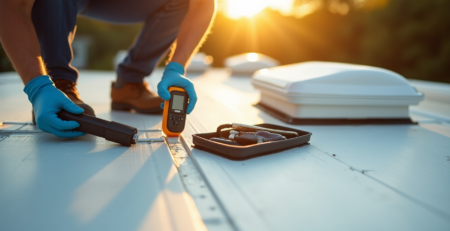
Revive Your Ride: Expert Engine Cooling System Repair Guide
Understanding Engine Cooling Systems
As an integral part of your vehicle, understanding the role and components of the engine cooling system is key to maintaining a healthy and efficient car.
Importance of Engine Cooling Systems
The engine cooling system plays a crucial role in maintaining the optimal operating temperature of the engine. This system prevents overheating and ensures efficient performance, thereby preventing wear and tear, reducing pollution, and improving overall efficiency.
If the cooling system fails, it can lead to serious issues such as overheating of the engine, causing cylinder head gaskets to explode and engine blocks to crack. This underscores the importance of regular maintenance and, if necessary, engine cooling system repair, to prevent potential damage and costly repairs.
Components of Engine Cooling Systems
The engine cooling system consists of various components that work together to regulate the engine’s temperature and prevent overheating. These components include:
- Radiator: Acts as a heat exchanger to cool the engine coolant.
- Water Pump: Circulates the coolant through the engine and the radiator.
- Thermostat: Regulates the flow of coolant based on the engine’s temperature.
- Hoses: Connect the radiator to the engine, allowing for the flow of coolant.
- Coolant: Absorbs heat from the engine and carries it away to the radiator.
Each of these components plays an essential role in the overall function of the cooling system. A failure in any one of these components can cause the entire cooling system to fail, leading to overheating and potential engine damage.
For a more detailed look at these components and their roles in the cooling system, check out our article on engine cooling system components. Understanding these components can help identify potential issues and make necessary repairs to keep your engine running smoothly.
Engine Cooling System Maintenance
Proper maintenance of the automotive engine cooling system plays a crucial role in maintaining the optimal operating temperature of the engine, preventing overheating, and ensuring efficient performance. The cooling system consists of various components such as the radiator, coolant, water pump, thermostat, hoses, and fan. This section will focus on the routine maintenance and servicing of these systems, along with identifying common cooling system issues.
Routine Maintenance and Servicing
Routine maintenance of your vehicle’s cooling system involves several procedures that should be carried out at regular intervals. According to Family Handyman, the cooling system should be flushed, and the coolant should be replaced every 30,000 miles or every five years, whichever comes first. This is to ensure that the coolant remains clean and effective in absorbing and dissipating heat.
Before you undertake any maintenance tasks such as engine coolant replacement or a coolant flush, the cooling system should be completely drained. It’s important to wear protective gloves and eyewear when working with coolant as it can be toxic.
Identifying Common Cooling System Issues
Awareness of the common issues that can afflict your engine’s cooling system is key to ensuring its longevity and performance. Here are some signs that your cooling system might be having issues:
- Low fluid level in the radiator: This may indicate a significant leak or another problem within the cooling system that requires professional attention.
- Dark or dirty coolant: This can be a sign of an issue somewhere within the cooling system, and may require coolant replacement or a full fluid flush.
- Radiator coolant leaking under the car: This is a sign of a cooling system problem and should be inspected by a professional technician.
- Engine overheating: This can indicate a failing cooling system and should be repaired to prevent major internal engine damage.
- Seized up engine: This can be the result of a cooling system failure.
- Temperature warning lights, check engine lights, or other specific warning lights related to the cooling system should prompt immediate inspection and repairs.
All these signs are indicators that your cooling system might need attention. For more detailed information, visit our guide on engine coolant leak or other engine cooling system parts.
Remember, the key to a long-lasting and efficient cooling system lies in regular maintenance and prompt attention to any potential issues. Always consult a professional if you’re unsure about any aspect of engine cooling system repair.
Repairing Your Cooling System
In the life of an automobile, engine cooling system repair is a common necessity. The process can be relatively straight-forward if you’re familiar with the engine cooling system components, have the right tools, and follow safety precautions.
Steps to Repairing a Cooling System
Before diving into repairs, it’s crucial to identify any issues within the cooling system. Signs of problems can include low fluid level in the radiator, dark or dirty coolant, or engine coolant leak under the car. Overheating engines or warning lights in the dashboard related to the cooling system should also prompt immediate inspection and repairs (San Francisco Automotive Solutions).
Here are the general steps to repairing a cooling system:
- Safely drain the coolant: Before removing any parts, the cooling system should be completely drained. Always remember to wear protective gloves and eyewear when handling coolant as it can be toxic. Also, the radiator cap should be removed carefully as the coolant can be hot and under pressure.
- Inspect and replace faulty components: After draining, inspect the engine cooling system parts for any visible damage. Common issues can include leaks in the radiator, malfunctioning water pump, or a failing thermostat. Replace any faulty components as needed.
- Refill the coolant: Use a coolant mixture of 50% distilled water and 50% coolant for optimal performance.
- Check for leaks: After reinstalling all components and refilling the coolant, run the engine and check for any leaks. Ensure the system is holding pressure and the engine is not overheating.
Remember, if you’re unsure or uncomfortable performing these repairs, it’s always best to seek the help of a professional technician.
Tools Needed for Cooling System Repair
To effectively conduct an engine cooling system repair, you’ll need the right tools. Here is a general list:
- Coolant drain pan: To collect and dispose of old coolant.
- Wrench set: To remove and install bolts on components.
- Screwdrivers: To remove clamps or covers.
- Protective gloves and eyewear: For personal safety when handling coolant.
- Funnel: To prevent spills when refilling coolant.
- Replacement coolant: Check your vehicle’s specification for the right type.
- Replacement parts: Depending on the issue, you may need automotive engine parts like a new radiator, water pump, or thermostat.
Remember, each vehicle is unique, and some may require specialized tools or procedures. Always refer to your vehicle’s service manual for specific information related to your model.
By understanding these steps and having the right tools, you can confidently tackle your engine cooling system repair.
Upgrading Your Engine Cooling System
Should the need arise, upgrading your engine cooling system can be a beneficial move. This can mean selecting high-quality replacement parts or installing new components that enhance the system’s performance.
Selecting Quality Replacement Parts
When it comes to engine cooling system repair, selecting top-notch replacement parts is crucial. The main components to consider include the radiator, water pump, thermostat, and hoses, all of which work in tandem to regulate the engine’s temperature and prevent overheating (CarParts.com).
When choosing these parts, prioritize quality and compatibility with your vehicle. Look for products from reputable manufacturers that offer durability and performance.
Below is a brief overview of the main engine cooling system components:
- Radiator: This component cools down the hot coolant as it passes through its small tubes, dissipating the heat into the surrounding air and helping maintain the engine’s optimal temperature.
- Water Pump: This part circulates the coolant throughout the engine, ensuring that it flows through the radiator and other components.
- Thermostat: This device acts as a valve that regulates the flow of coolant between the engine and the radiator.
Installing New Components
Installing new components is a comprehensive task. Here are some tips to consider:
- Read the manual: Before starting, read the repair manual for your specific vehicle model. This will provide you with step-by-step instructions and visual diagrams of the cooling system.
- Prepare your tools: Gather all the necessary tools listed in the manual. This typically includes wrenches, screwdrivers, pliers, and a drain pan for the coolant.
- Drain the Coolant: Before you start, you’ll need to drain the existing coolant from the system. Make sure to dispose of the old coolant safely.
- Remove the Old Parts: Carefully remove the old parts that need replacing. This may include the radiator, water pump, thermostat, or hoses.
- Install the New Parts: Install the new components according to the instructions in the repair manual. Make sure each part is securely fastened and connected to the correct hoses or fittings.
- Refill the Coolant: Once the new parts are installed, refill the system with coolant. Then, start the vehicle and let it run for a few minutes with the heater on to circulate the coolant and check for leaks.
Remember, if you’re unsure about any step in the process, it’s best to seek the help of a professional mechanic. Also, be sure to check out our guide on engine coolant replacement for more tips.
By selecting quality replacement parts and carefully installing new components, you can upgrade your engine cooling system and ensure that your vehicle runs smoothly and efficiently.
Safety Measures for Cooling System Repairs
When carrying out engine cooling system repairs, safety should be your top priority. This involves handling coolant safely and knowing how to deal with overheating issues.
Handling Coolant Safely
Engine coolant, while essential to your vehicle’s operation, can be toxic. It’s important to wear protective gloves and eyewear when working with coolant (Family Handyman). This protective gear will prevent any accidental contact with your skin or eyes, which could lead to irritation or more serious injuries.
Additionally, you should always remove the radiator cap with caution. The coolant can be hot and under pressure, which can lead to dangerous spouting of the fluid. To avoid this, let your vehicle cool down before opening the radiator cap.
Finally, keep in mind to dispose of the old coolant properly. Due to its toxic nature, it should never be poured down the drain or onto the ground. Instead, collect it in a sealable container and take it to a local waste facility for safe disposal.
Dealing with Overheating Issues
Overheating is a clear sign of a failing cooling system. If your engine overheats, it can lead to major internal engine damage, and in extreme cases, can result in a seized up engine.
Temperature warning lights, check engine lights, or other specific warning lights related to the cooling system should prompt immediate inspection and repairs (San Francisco Automotive Solutions). Don’t ignore these signs, as they indicate that your engine is operating at higher temperatures than it should.
In case of overheating while driving, pull over as soon as it is safe to do so and turn off the engine to allow it to cool. Continuing to drive an overheating vehicle can cause severe damage to the engine.
Remember, a well-maintained cooling system is crucial in preventing these challenges. Regularly checking coolant levels, monitoring for signs of leakage, and performing routine maintenance can help keep your cooling system in peak condition.
For more information on keeping your cooling system healthy, check out our article on engine coolant replacement and engine cooling system components.
Maintaining a Healthy Cooling System
To prolong the life of your car’s engine, it’s crucial to maintain a healthy automotive engine cooling system. This involves regularly checking coolant levels and monitoring for signs of leakage.
Regularly Checking Coolant Levels
The coolant in your engine plays a vital role in maintaining the temperature of your engine. It’s recommended to use a coolant mixture of 50% distilled water and 50% coolant for optimal performance.
The engine cooling system should be flushed and the coolant should be replaced every 30,000 miles or every five years, whichever comes first. Over time, the cooling system may accumulate debris and contaminants, which can clog the radiator and reduce its efficiency. Flushing the system every 2-3 years can help remove these impurities and maintain optimal performance (Royal Kia).
Coolant levels should be checked regularly, especially before embarking on long drives or during extreme weather conditions. Low fluid level in the radiator may indicate a significant leak or another problem within the cooling system that requires professional attention (San Francisco Automotive Solutions). For more information, check out our article on engine coolant replacement.
Monitoring for Signs of Leakage
Keeping an eye out for signs of coolant leakage is another essential aspect of maintaining a healthy cooling system. A visible sign of a problem is radiator coolant leaking under the car. Any suspected leaks should be inspected by a professional technician.
Dark or dirty coolant may also be a sign of an issue somewhere within the cooling system, and may require coolant replacement or a full fluid flush.
Temperature warning lights, check engine lights, or other specific warning lights related to the cooling system should prompt immediate inspection and repairs. Ignoring these signs might lead to engine overheating, which can indicate a failing cooling system and should be repaired to prevent major internal engine damage.
In the worst-case scenario, a cooling system failure can result in a seized-up engine. Therefore, it’s crucial to monitor for signs of leakage and address them promptly to prevent engine damage. For further reading, check out our guide on how to handle an engine coolant leak.
By regularly checking coolant levels and keeping an eye out for any signs of leakage, you can ensure the efficient operation of your engine cooling system and safeguard your engine’s health.
Author
I am Rahatul Ashiq Tamal. Another author of Muscle Trailers. Muscle Trailers is a well-known trailer brand in Sydney, Melbourne & Adelaide

How to Mount a Spare Tire on Your Trailer: A Simple Step-by-Step Guide
Trailer service centers receive over 1 million phone calls and 1.3 million emails each year about trailer maintenance problems....

How to Fix RV Roof Leaks: Simple Roof Leak Detection Guide for Beginners
Did you know DIY RV roof repairs can cost under $50? But undetected leaks could lead to substantially higher repair...

Starting a Food Truck Business in Australia: From Trailer Selection to Launch
The Australian mobile food market has evolved into a billion-dollar industry. This makes a food truck...
